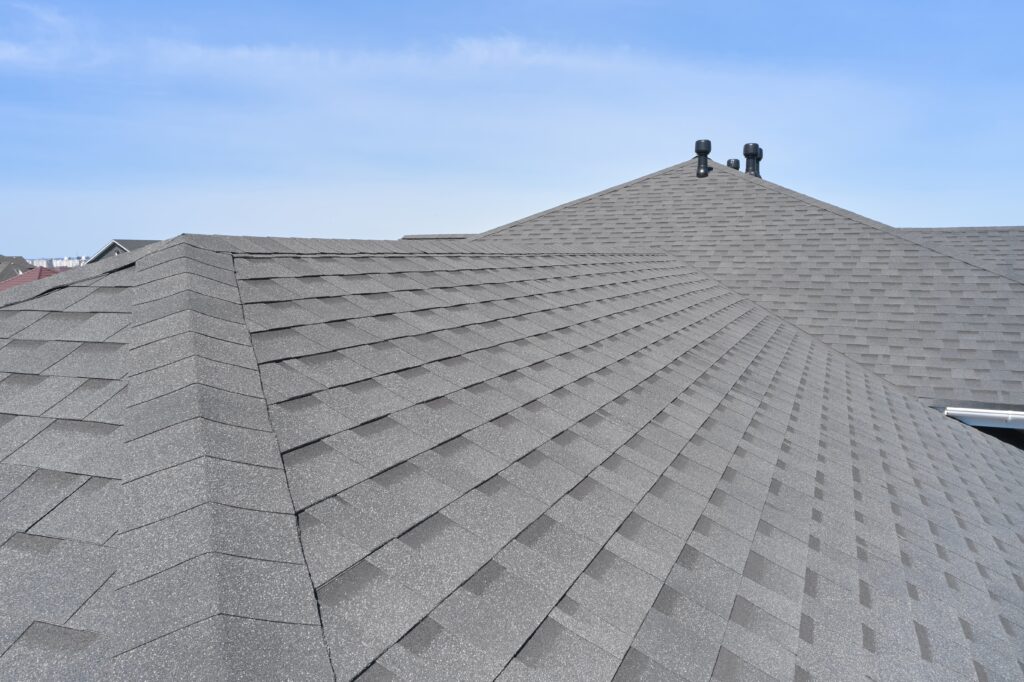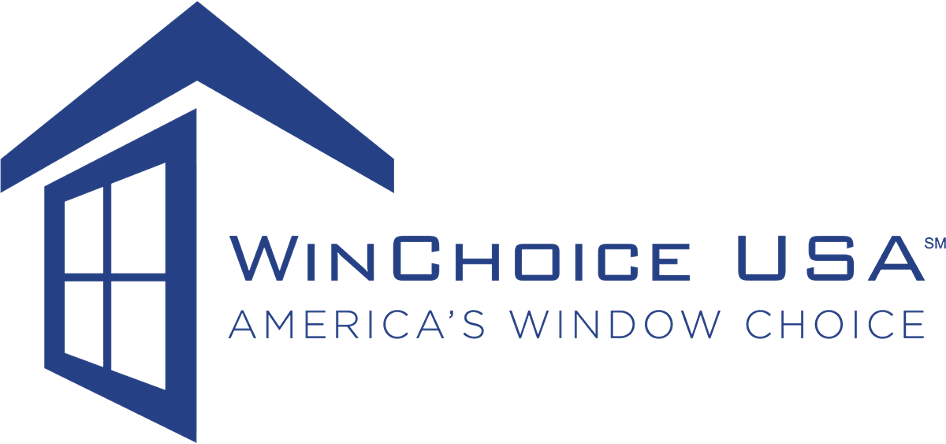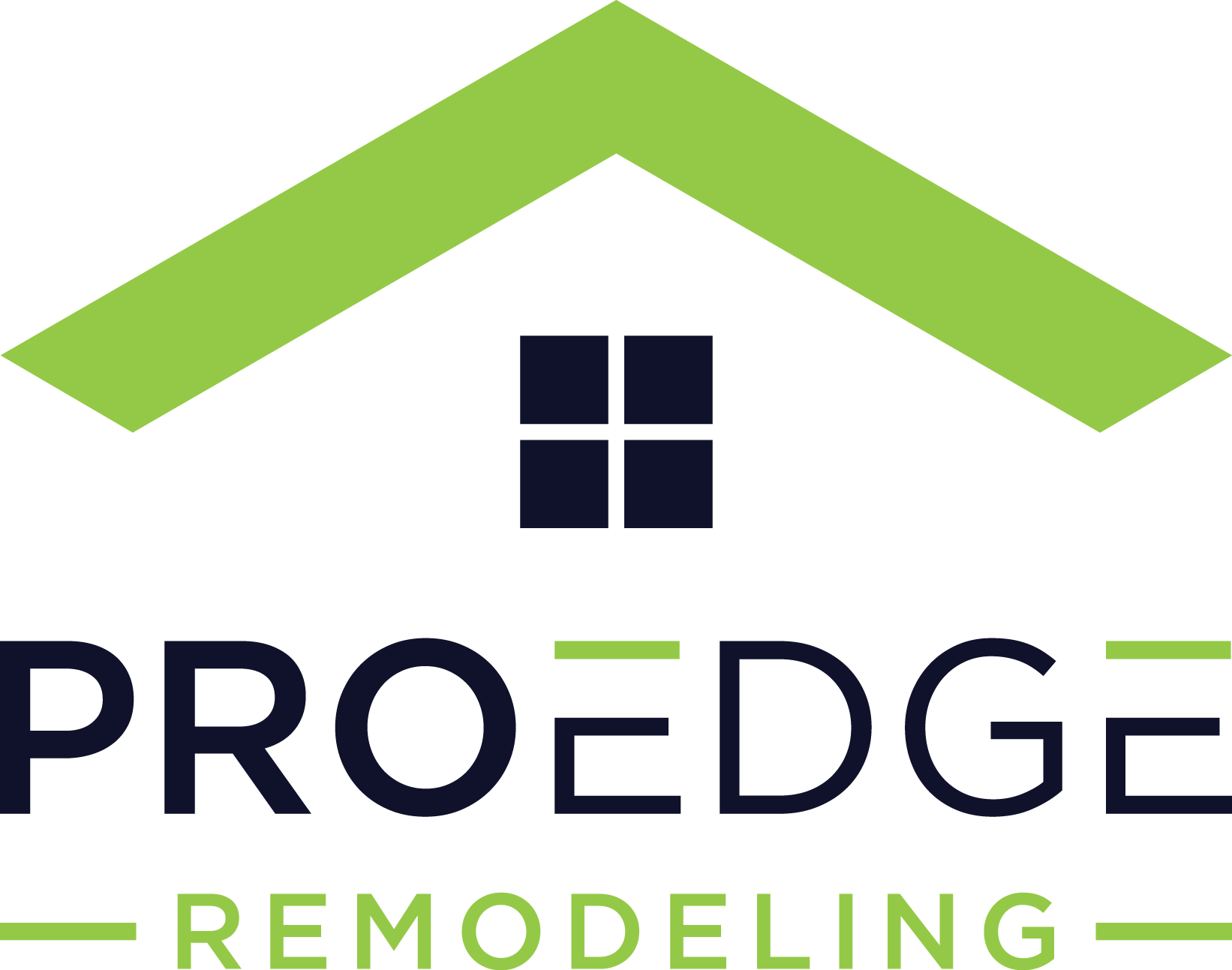Roofing Shingles Cost Guide: What You’ll Pay in 2025

When your roof starts showing signs of wear, understanding the costs involved helps you make informed decisions without breaking the bank. In this guide, we break down exactly what you’ll pay for different roofing materials in 2025, from budget-friendly asphalt to century-lasting slate.
Shingle prices vary dramatically based on material type, manufacturer, installation complexity, and geographic location. We’ll explore these factors and offer practical strategies to maximize value without sacrificing quality.
Table of Contents
Average Cost of Roofing Shingles in 2025
Most homeowners will spend between $7,500 and $24,000 for a complete roof replacement in 2025, with the national average sitting at approximately $15,750. This wide range reflects the significant impact that your choice of materials, roof size, and location have on the final price tag.
For materials alone, expect to pay:
- $1.00 to $15.00 per square foot depending on material quality and type
- $100 to $1,500 per square (roofing term for 100 square feet)
For a typical 2,000 square foot home with approximately 1,500-2,200 square feet of roof area (15-22 squares), here’s what you might pay for a complete replacement:
Cost Tier | Price Range | Typical Materials |
Budget | $7,500-$10,000 | Basic 3-tab asphalt |
Mid-range | $10,000-$18,000 | Architectural asphalt, basic metal |
Premium | $18,000-$35,000 | Premium metal, composite, wood |
Luxury | $35,000-$75,000 | Slate, clay tile, copper |
Roofing contractors quote in “squares” (100 square feet), not just square footage. A 2,000 square foot house typically needs 17-20 squares of roofing materials when accounting for overhangs and roof pitch.
Cost by Type of Roofing Shingle
Your choice of shingle material has the single largest impact on your project’s total cost. Each option offers different benefits in terms of appearance, durability, and performance.
Asphalt Shingles
Asphalt shingles account for roughly 80% of residential roofs due to their balance of affordability and performance. They come in three main categories:
- 3-tab shingles: $0.70-$2.00 per square foot ($70-$200 per square)
- Flat, uniform appearance
- 15-20 year typical lifespan
- Best for rental properties or tight budgets
- Architectural shingles: $1.00-$3.00 per square foot ($100-$300 per square)
- Multi-layered with dimensional appearance
- 25-30 year lifespan
- The sweet spot for most homeowners
- Premium/luxury asphalt: $1.50-$4.00 per square foot ($150-$400 per square)
- Heavy-duty products mimicking slate or wood
- 30-40 year warranties
- Enhanced impact and wind resistance
The price gap between basic 3-tab and architectural shingles has narrowed to $500-$1,500 for an average home, making architectural shingles the better value when considering their longer lifespan and improved warranty.
Wood Shingles/Shakes
Wood roofing creates a timeless, organic aesthetic that many high-end neighborhoods prefer. Cedar is the preferred species due to its natural oils that resist insects and decay.
- Machine-cut shingles: $4.00-$6.00 per square foot ($400-$600 per square)
- Uniform thickness with cleaner appearance
- 20-25 year lifespan with proper maintenance
- Hand-split shakes: $5.00-$8.00 per square foot ($500-$800 per square)
- Thicker, more textured appearance
- 25-30 year lifespan with proper maintenance
Wood requires regular treatments to prevent moss, mildew, and rot. Budget $500-$1,200 every 3-5 years for cleaning and preservative applications—a significant factor in lifetime cost calculations.
Metal Shingles
Metal roofing has surged in popularity, now representing about 15% of residential re-roofing projects. Modern metal shingles bear little resemblance to old agricultural panels, offering elegant profiles and finishes that complement various architectural styles.
- Steel shingles: $4.00-$7.00 per square foot ($400-$700 per square)
- Most common and versatile
- 40-60 year lifespan
- Aluminum shingles: $3.50-$6.50 per square foot ($350-$650 per square)
- Excellent for coastal areas due to corrosion resistance
- 40-50 year lifespan
- Premium metals (copper, zinc): $15.00-$25.00 per square foot ($1,500-$2,500 per square)
- Develop distinctive patinas over time
- 70-100+ year lifespan
While metal shingles cost 2-3 times more than asphalt upfront, their longevity and minimal maintenance requirements can make them more economical over decades. Many homes with metal roofs never need replacement within the owner’s lifetime.
Slate Shingles
Genuine slate is the pinnacle of roofing materials, offering unmatched longevity and timeless elegance. It’s typically found on luxury homes, historic properties, and buildings designed to last generations.
- Standard slate: $8.00-$12.00 per square foot ($800-$1,200 per square)
- 1/4″ to 3/8″ thickness
- 75-100 year lifespan
- Premium slate: $12.00-$18.00 per square foot ($1,200-$1,800 per square)
- 3/8″ to 1/2″ thickness, often from select quarries
- 100-150+ year lifespan
Slate is extremely heavy (800-1,500 lbs per square) and often requires structural reinforcement adding $2,000-$10,000 to the project. Installation labor costs are also significantly higher due to the specialized skills required.
Clay or Concrete Tiles
Clay and concrete tiles create architectural character with their distinctive profiles and shadow lines. They’re particularly popular in hot, sunny climates due to their excellent heat resistance.
- Concrete tiles: $6.00-$10.00 per square foot ($600-$1,000 per square)
- Wider color range but marginally less durable
- 50-75 year lifespan
- Clay tiles: $8.00-$15.00 per square foot ($800-$1,500 per square)
- Traditional terracotta or modern glazed finishes
- 75-100+ year lifespan
Like slate, tiles are heavyweight (900-1,200 lbs per square) and typically require structural evaluation before installation. This can add $2,000-$8,000 to your project depending on what reinforcement is needed.
Synthetic/Composite Shingles
Engineered from polymers, rubber, and recycled materials, synthetic roofing mimics natural materials like slate or wood while eliminating many of their drawbacks such as weight and maintenance requirements.
This is the newest material category with rapidly improving technology. While they lack the multi-decade track record of traditional materials, most reputable manufacturers offer impressive 40-50 year warranties.
- Slate-look composites: $4.00-$8.00 per square foot ($400-$800 per square)
- Closely resemble natural slate at 1/3 to 1/2 the cost
- 40-50 year typical lifespan
- Cedar-look synthetics: $4.00-$6.00 per square foot ($400-$600 per square)
- Mimic wood appearance without maintenance concerns
- 40-50 year typical lifespan
Factors That Affect Shingle Cost
While material choice is the primary cost driver, several other factors significantly impact your final price. Understanding these variables helps explain why identical homes might receive different estimates.
Roof Size and Pitch
Roof size directly affects material quantity, but pitch (steepness) impacts labor complexity:
- Low pitch (2:12 to 4:12): Standard labor rates apply
- Medium pitch (5:12 to 8:12): May add 15-20% to labor costs
- Steep pitch (9:12 and up): Can add 25-40% to labor costs due to safety requirements and slower installation
Roof Complexity
Complex roof designs with multiple angles, valleys, dormers, and penetrations require more materials and labor:
- Simple roof (rectangle with single ridge): Baseline cost
- Moderate complexity (L-shaped with valleys): Adds 10-15% to total cost
- High complexity (multiple dormers, levels, hips and valleys): Adds 20-25% to total cost
Removal of Existing Roofing
Tearing off old roofing material is labor-intensive work:
- Single layer removal: $1.00-$2.00 per square foot
- Multiple layer removal: $2.00-$5.00 per square foot
- Disposal fees: $500-$1,500 depending on roof size and local landfill rates
Underlayment, Flashing, and Ventilation
These critical components create your roof’s defense system:
- Synthetic underlayment: $0.30-$0.50 per square foot
- Ice and water shield: $0.50-$0.80 per square foot (required in cold climates)
- Flashing package: $400-$1,500 depending on material and complexity
- Ventilation system: $300-$1,500 for proper ridge and intake vents
If estimates differ significantly in price, check if all include quality underlayment, ice and water shield in valleys and problem areas, and proper ventilation. These “invisible” components are often where corners get cut.
Geographic Location and Climate Requirements
Where you live significantly impacts what you’ll pay:
Region | Price Impact | Special Requirements |
Northeast | 15-25% above average | Ice barriers, higher labor rates |
Southeast | 5-10% below average | Hurricane strapping, algae-resistant shingles |
Midwest | Near national average | Storm-rated impact resistance |
West Coast | 10-30% above average | Higher labor costs, fire ratings |
Mountain | 5-15% above average | Snow load capacity, UV protection |
Installation Cost Breakdown
Understanding labor and additional costs helps explain why material prices represent only a portion of your total investment.
Labor Cost Per Square
Professional installation typically represents 60-65% of your total project cost:
Material | Labor Cost Per Square (100 sq ft) |
Asphalt | $150-$350 |
Metal | $250-$600 |
Wood | $250-$500 |
Synthetic | $300-$600 |
Tile | $400-$1,000 |
Slate | $500-$1,200 |
These figures include standard prep work, installation, and basic cleanup. Experienced crews can complete most asphalt shingle homes in 1-3 days, while premium materials may take 4-7 days depending on complexity.
Disposal and Cleanup Fees
Proper removal and disposal of old materials involves:
- Dumpster rental: $300-$600 depending on size and duration
- Debris protection for landscaping: $100-$300
- Final cleanup and nail sweep: $100-$200
DIY vs. Professional Installation
While DIY installation offers substantial savings on paper, consider these factors:
DIY approach:
- Material costs only: $4,000-$6,000 for basic asphalt (average home)
- Equipment rental: $500-$1,000 for ladders, nail guns, jacks, etc.
- Dumpster rental: $300-$600
- Time commitment: 30-60+ hours depending on experience and roof complexity
- Warranty implications: Manufacturer material warranties typically void without professional installation
Professional installation advantages:
- Expertise in proper techniques and problem detection
- Faster completion (typically 1-3 days vs. 1-2 weeks)
- Access to contractor discounts on materials (often 10-15%)
- Workmanship warranties (typically 5-10 years)
- Proper insurance and safety equipment
Roofing consistently ranks among the most dangerous DIY projects with significant injury risks. For most homeowners, the safety concerns alone outweigh potential savings.
Long-Term Value and Lifespan
The lowest upfront cost rarely equals the best long-term value. Considering each material’s lifespan dramatically changes the cost equation.
Cost Per Year Comparison
Looking at materials from a cost-per-year perspective reveals their true value:
Material | Initial Cost (Average Home) | Expected Lifespan | Annual Cost |
3-tab Asphalt | $8,000 | 15-20 years | $400-$533/year |
Architectural Asphalt | $12,000 | 25-30 years | $400-$480/year |
Metal | $20,000 | 40-70 years | $285-$500/year |
Wood | $24,000 | 20-30 years | $800-$1,200/year |
Synthetic | $22,000 | 40-50 years | $440-$550/year |
Clay Tile | $35,000 | 75-100 years | $350-$467/year |
Slate | $45,000 | 75-100+ years | $450-$600/year |
Maintenance Requirements by Material
Maintenance costs impact total ownership expense:
Asphalt shingles:
- Annual inspection: $200-$300
- Occasional repairs: $300-$600 every 5-10 years
- Cleaning for algae/moss: $250-$500 every 3-5 years in humid regions
Metal roofing:
- Inspection: $200-$300 every 2 years
- Fastener check/replacement: $200-$400 every 10-15 years
- Minimal cleaning requirements
Wood shakes/shingles:
- Cleaning: $300-$600 every 1-2 years
- Preservative treatments: $500-$1,200 every 3-5 years
- Replacement of damaged shingles: $300-$700 every 5-8 years
Slate, clay, and composites:
- Periodic inspection: $200-$400 every 2-3 years
- Minimal maintenance beyond occasional repairs
- Flashing maintenance: $300-$700 every 15-20 years
Energy Efficiency and Resale Value
Certain roofing choices can reduce energy costs and improve resale value:
Energy impact:
- Cool-roof rated asphalt shingles can reduce cooling costs 10-15%
- Metal roofing can reduce cooling costs 10-25%
- Clay tile naturally insulates against heat transfer
Resale considerations:
- A new roof typically recovers 60-70% of its cost in home value
- Premium materials recover more value in luxury home markets
- Transferable warranties add significant appeal to buyers
Tips to Save on Roofing Shingle Costs
Smart strategies can help you reduce expenses without compromising on quality. These approaches focus on maximizing value rather than simply cutting costs.
Getting Multiple Quotes
- Obtain at least three detailed estimates from reputable contractors
- Request line-item breakdowns to compare specific components
- Look beyond the bottom line at material specifications and workmanship details
- Check references and online reviews for quality assurance
Choosing the Right Time of Year
Timing your project strategically can yield significant savings:
- Off-season discounts: Schedule during late fall or winter when contractor demand drops (potential savings: 5-15%)
- Material price increases: Manufacturers typically raise prices in late winter/early spring, so purchasing materials before these increases can save 3-7%
- Emergency premium: Avoid roof replacement during peak leaking season when contractors charge premium rates for urgent work
Exploring Warranties and Financing Options
Smart financial strategies can make quality roofing more affordable:
- Manufacturer certifications: Contractors with manufacturer certifications often offer enhanced warranties worth $1,000-$2,000 in added value
- Promotional financing: Many contractors offer 0% interest periods or deferred payment options
- Home equity options: Using home equity typically provides lower interest rates than contractor financing or credit cards
- Insurance coordination: If your replacement stems from storm damage, timing work with insurance disbursements can ease cash flow concerns
Checking for Local or Federal Rebates
Various incentives can offset costs:
- Energy efficiency rebates: Up to $500 federal tax credit for qualified ENERGY STAR rated roofing
- Impact-resistant incentives: Insurance premium discounts of 5-30% in hail-prone regions
- Local programs: Some municipalities offer incentives for cool roofing or sustainable materials
- Historic property tax advantages: Properties in historic districts may qualify for preservation tax incentives
Conclusion
Your roof serves as your home’s primary defense against the elements, so ensuring it’s properly installed and maintained is essential. Understanding how materials, home design, and location affect costs helps you make informed decisions that balance immediate budget concerns with long-term value.
When making your decision, focus on the following:
- Calculate lifetime value (annual cost = price ÷ lifespan) rather than focusing solely on initial price
- Prioritize installation quality—even premium materials fail when poorly installed
- Verify comprehensive warranties covering both materials and workmanship
- Consider climate-specific requirements for your region
By approaching your roofing project with these considerations in mind, you’ll make choices that balance immediate budget concerns with long-term protection. The right roof, properly installed, will safeguard your home while enhancing its appearance and value for decades to come.
Need professional help with your roofing project? Get free, no-obligation quotes from qualified local contractors today!
Additional Roofing Resources

Anna has over six years of experience in the home services and journalism industries and serves as the Content Manager at MyHomePros.com, specializing in making complex home improvement topics like HVAC, roofing, and plumbing accessible to all. With a bachelor’s degree in journalism from Auburn University, she excels in crafting localized, comprehensive guides that cater to homeowners’ unique needs. Living on both coasts of the United States has equipped her with a distinctive perspective, fueling her passion for turning any house into a cherished home through informed, personalized decision-making.








